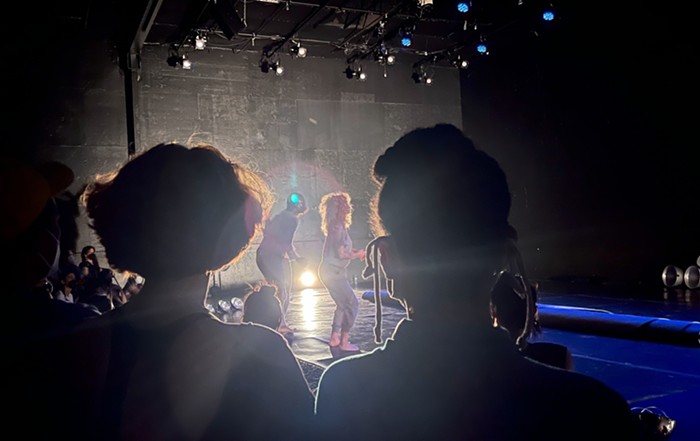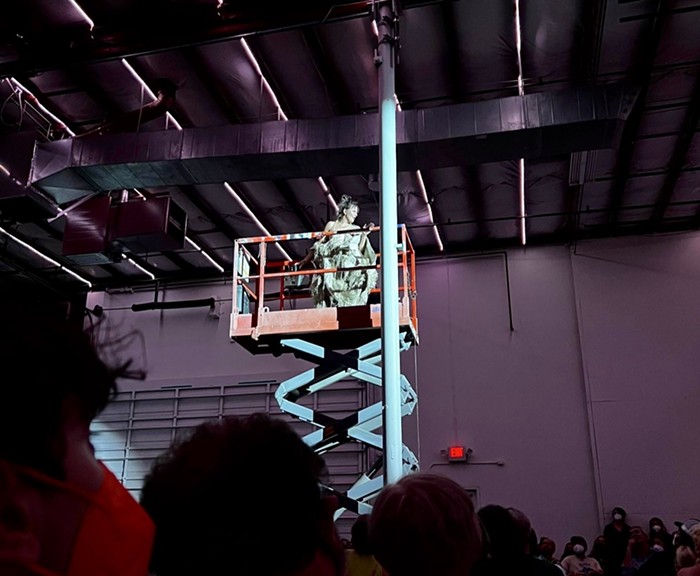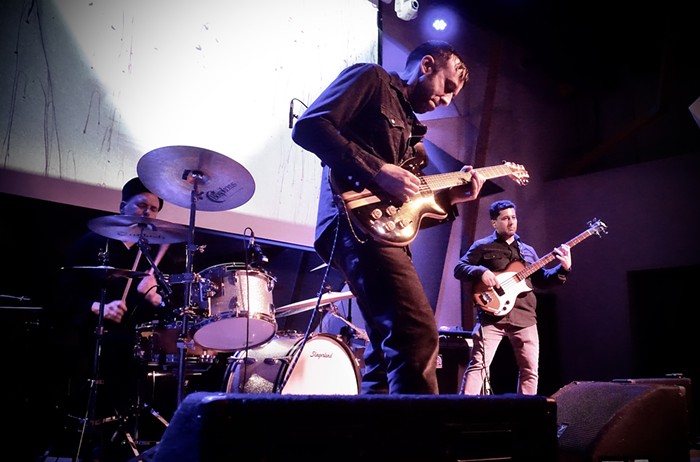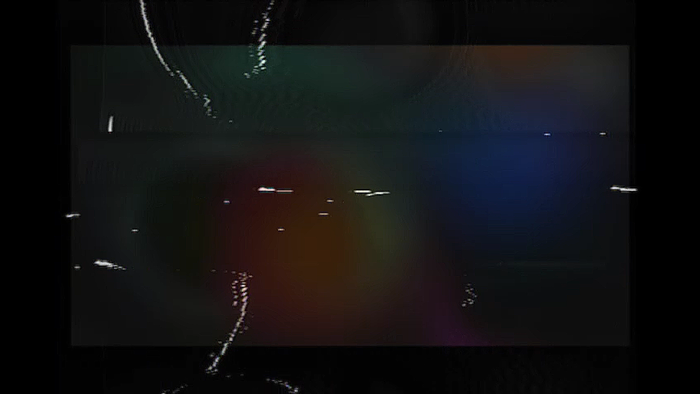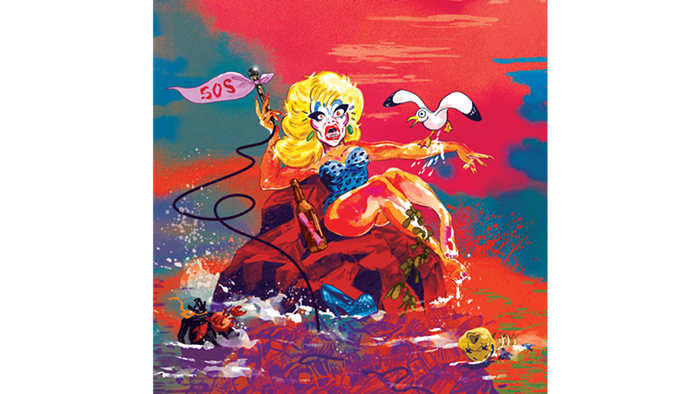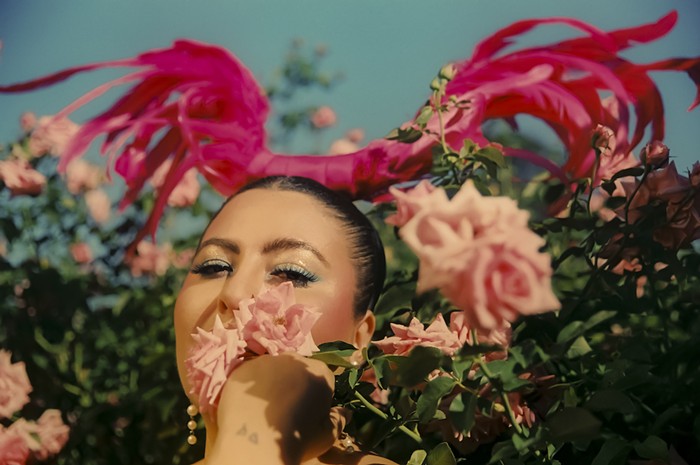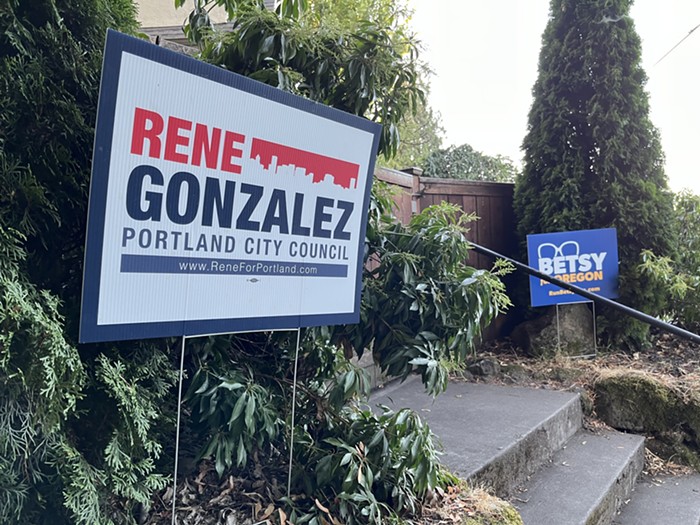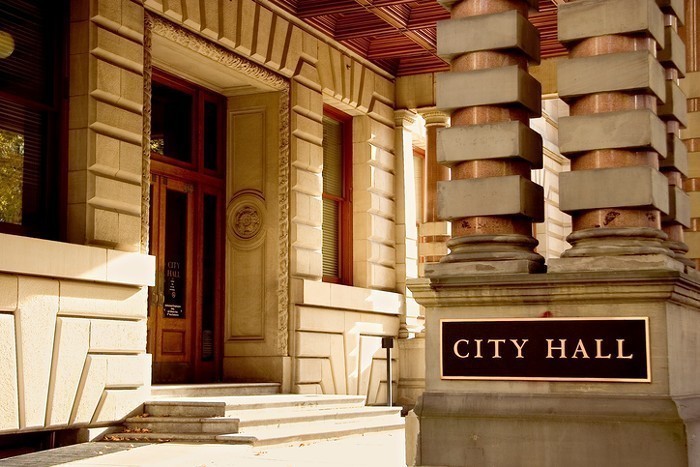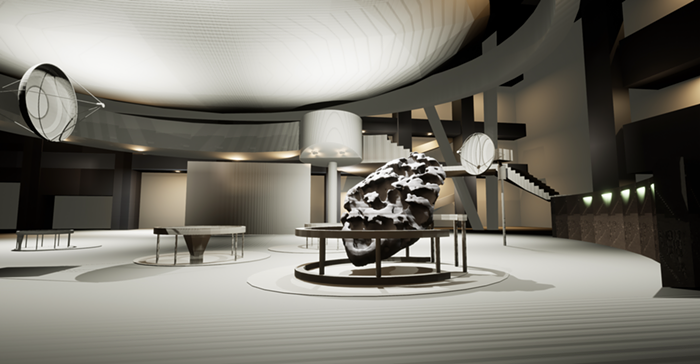
This year's Time-Based Art Festival (TBA) featured numerous virtual offerings—from video performances to artists' talks and panels, most of which are available to stream online at any time throughout the festival, which ends this Sunday. The flexibility of virtual offerings makes this year's TBA accessible and comprehensive.
The Drift by Garrick Imatani with Travis Stewart is a fifteen-plus minute virtual reality video that chronicles a reimagined future. Imantani and Stewart have been working together on The Drift, culminating in a publication and virtual reality installation. The video starts at the American Museum of Natural History in New York City, where the Grand Ronde Tribes sacred meteorite is held. Viewers are transported to this site. Slowly the screen fills with the meteorite that is confined by a round metal barrier. Without much pretense, the meteorite levitates out of its enclosure and the American Natural History Museum. Next, a subway car moves down tracks and stops at 14th Street Station. The meteorite then attempts to get into the subway car but cannot fit and instead heads out of the subway and downtown. Once the meteorite moves up and out of the subterranean, it hovers above a flooded Times Square. Cars are submerged in water throughout the street. This scene, unfortunately, feels more eerily resonant of the present day and not like a prospective apocalyptic future. It’s a glaring reminder of the unavoidable aspects of climate change that we are currently facing.
The meteorite traverses to the Statue of Liberty, Harvard, the Field Museum, and seemingly to Portland. Image files of Native American basketry, ceramics, and tools overlap the meteorite journey at each location. It is a visual representation and reminder that these pieces are often hoarded in museums instead of their own communities—cataloged and held in institutions in the name of preservation for the supposed public good. This comes at a cost to Indigenous communities that consider these cultural-historical objects. The Drift provides viewers with multiple instances, through this virtual reality experience, to consider failed Indigenous reparations. The video offers an aspiration that what has been lost and stolen can be rightfully returned.
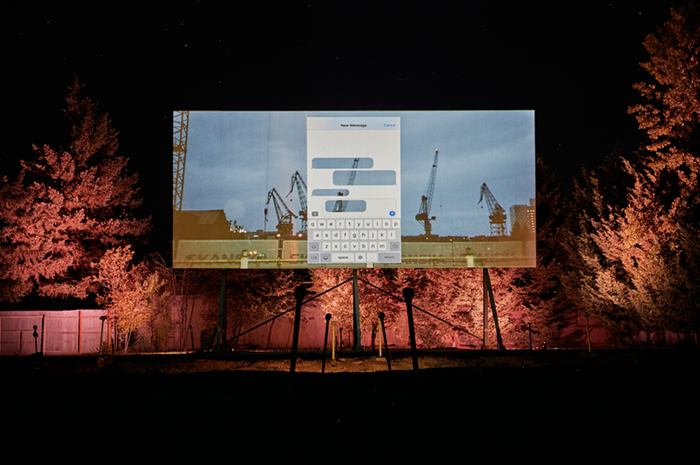
Fellow to Felt by Eileen Isagon Skyers is a multi-channel video series on an interactive webpage. The viewer is prompted to log in to the website featuring flora and fauna, blooming and expanding across the web page. Viewers must accept permissions that will allow them access to the site or "garden" and access to the microphone and camera on their phone, tablet, or computer to get the complete experience of this archival project. Once these permissions are accepted, the viewer's face then fills the browser circle. This heightens intimacy through the viewer and the shared videos, in a deliberate addition to the site that seems to cultivate "kapwa," which can be understood as a "shared inner self." This is relevant, as all the content on the site, videos, text, and web design, examines Filipino/a diasporas. The site lists ten sections; kapwa, Room, Chair, Song, Taguig, Church, Horizon, Dress, Palawan, and Guestbook. Videos on the site are created from "original and found footage, archival photographs, and obscure historical events" interwoven with pop culture and internet references. This contextualizes the relationship between historical aspects in the present day. This can clearly be seen in the "Chair" section, which features a thirteen-second video compilation of views of earth, sunsets, thermal maps, space, airplanes, and farmsteads, which flash rapidly across the screen.
A GIF that says "I'm having fun on the internet" bounces across the screen as images of musicians and celebrities in the rattan peacock chair. Text accompanies this section of the archive, which delves into the origins and history of the rattan peacock chair, how they were built with bamboo by prisoners in Bilibid Prison in the Philippines. The chair rose in popularity in the twentieth century because it became a popular backdrop for portraits of the famous and influential. The rattan peacock chair can most recently be seen in today's popular culture on the album cover for Drake's "More Life" (2017). The chair epitomizes an aesthetic of excessiveness with its opulent form, share and design, and motif. But this section of the site reminds viewers that the pop-cultural reframing of objects like the chair as an image of prominence can make the "sitting ghosts of our sordid past" quieter. Other highlights on kapwa - common. gardens are Dress and Church. However, the entire site provides insight into Skyers' conceptualized "consciousness of the interrelatedness one has with others" and the "contemporary struggle to make meaning of our social conditions" related to Filipino/a diasporas.
There are only several days left of TBA, closing Sunday, October 3,. This year, artists posed questions to the audience about our own circumstances concerning the environment, social, and racial justice, but they also encouraged the profoundly personal; interdisciplinarity coalesced. Both physical and virtual performances installations engaged viewers to interact with work, whether physically moving and walking with an artist in and with their performances, logging into a computer to press play, or engaging with a website. In that way, the combination of both vast and intimate stimulates the contemplative.
Ashley Gifford is a writer, photographer, and technology professional based in Portland, Oregon. She is the Founder/Editor of Art & About—part art blog, part publication, part resource—documenting art in the Pacific Northwest since 2014. She has written for Art Practical, Oregon Arts Watch, and many other publications.
